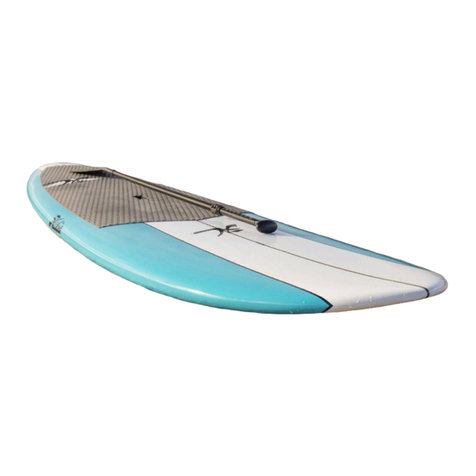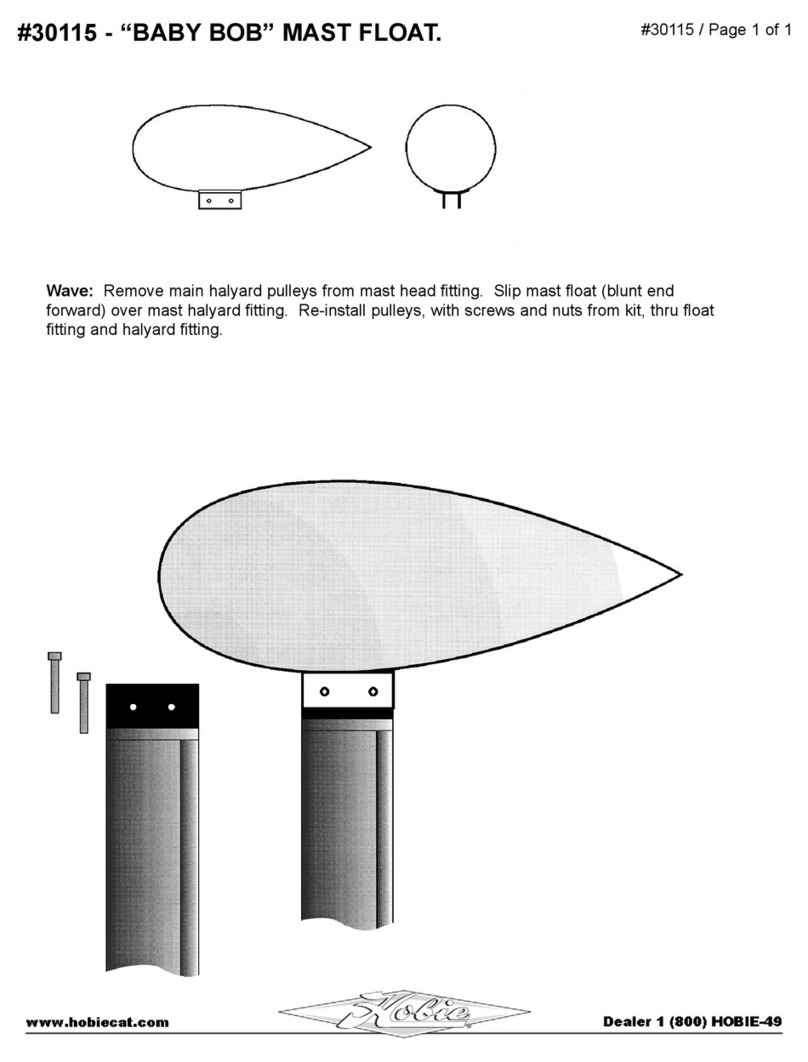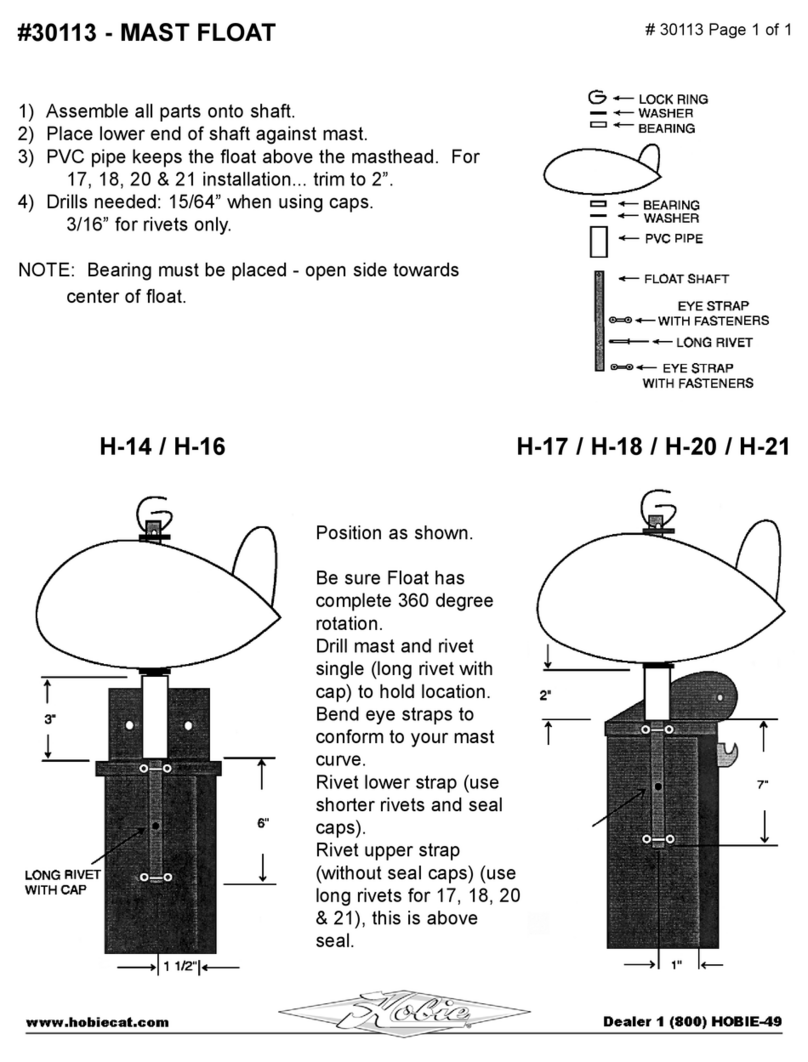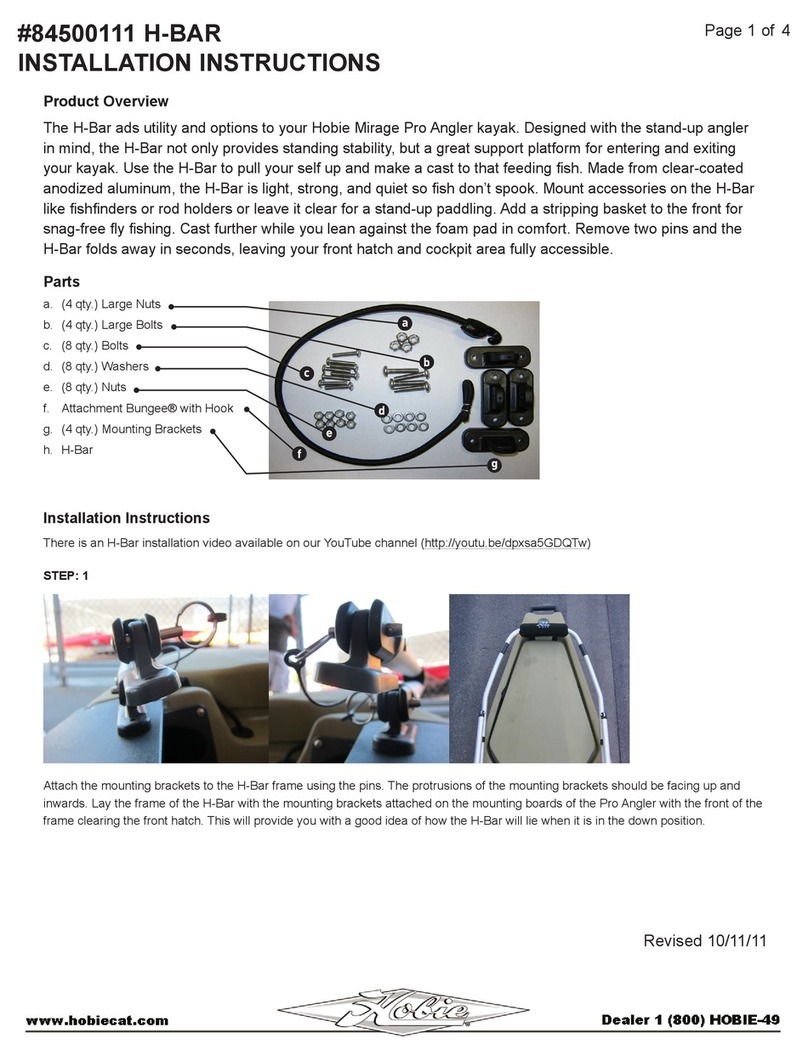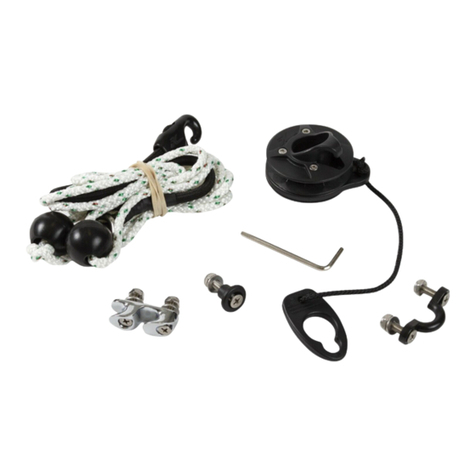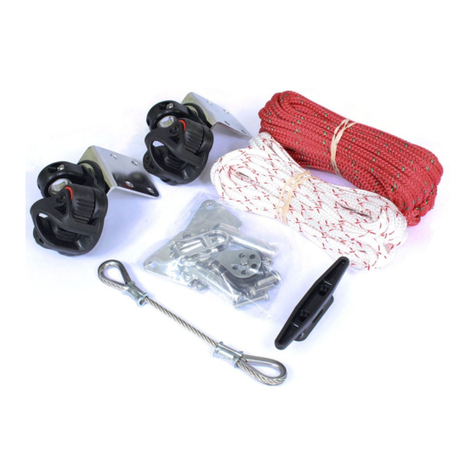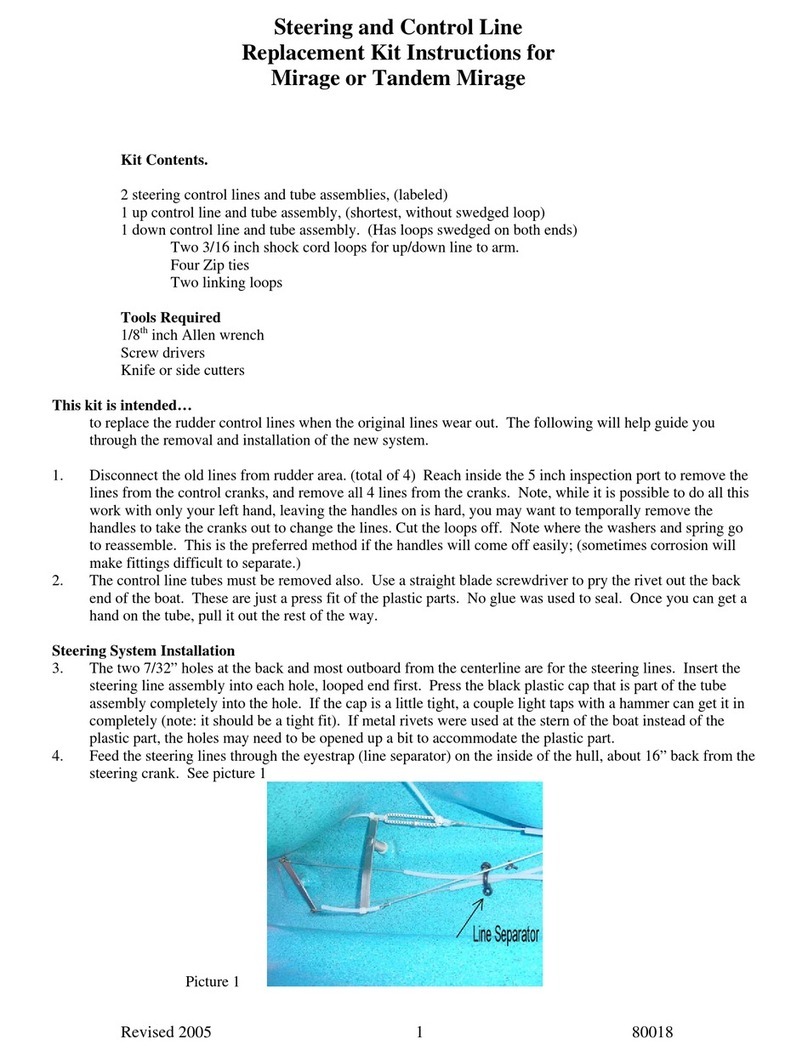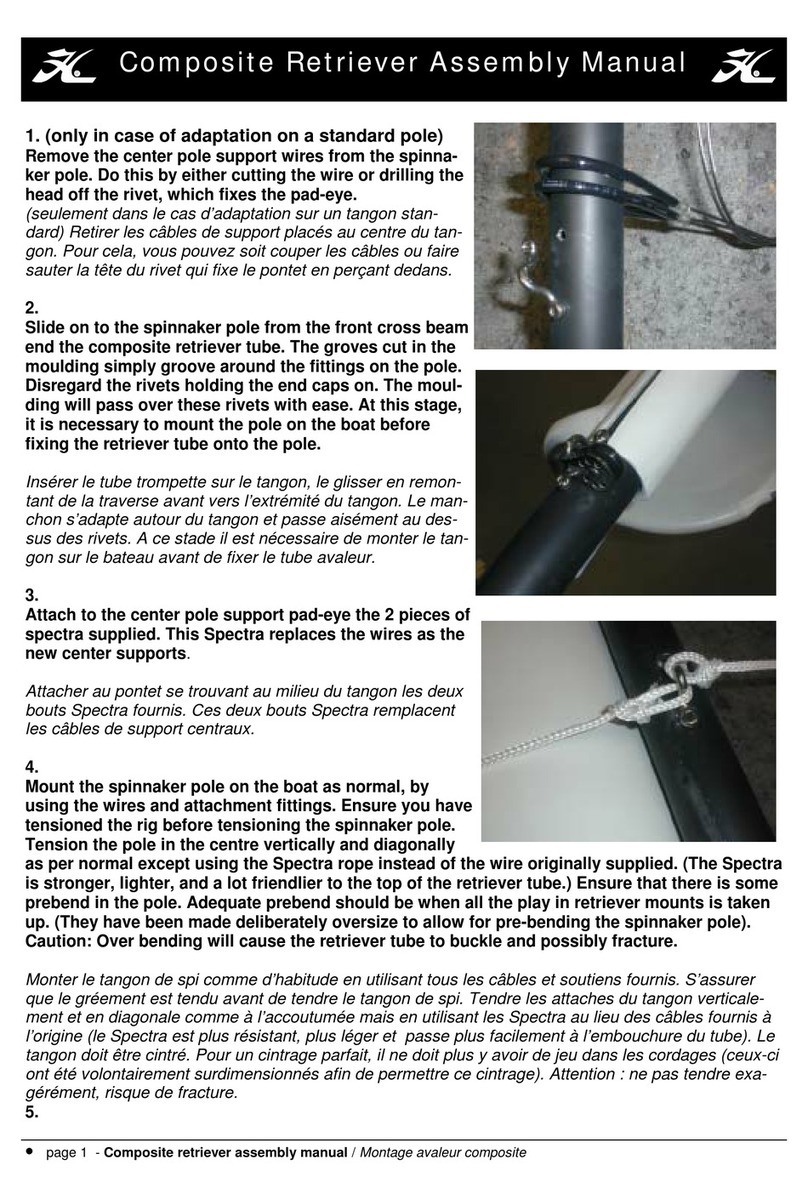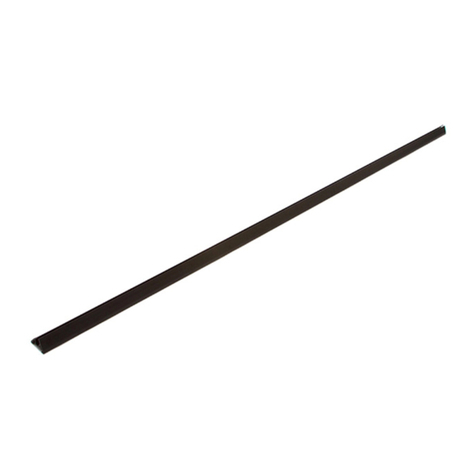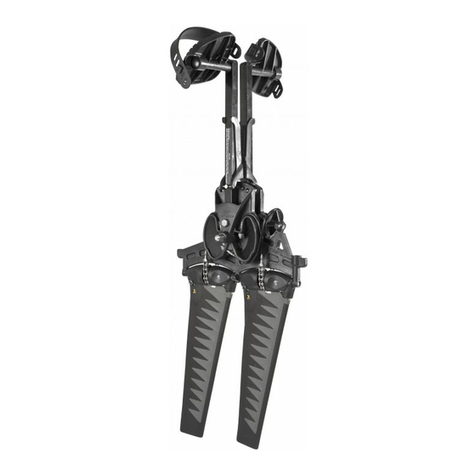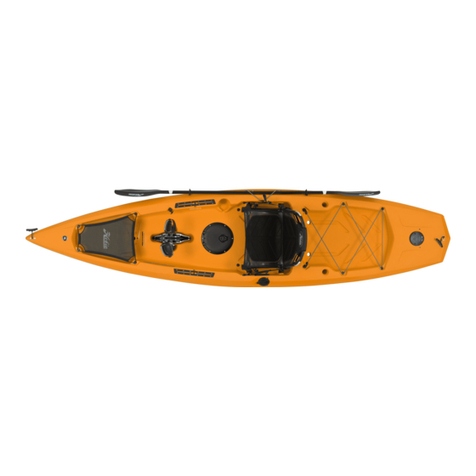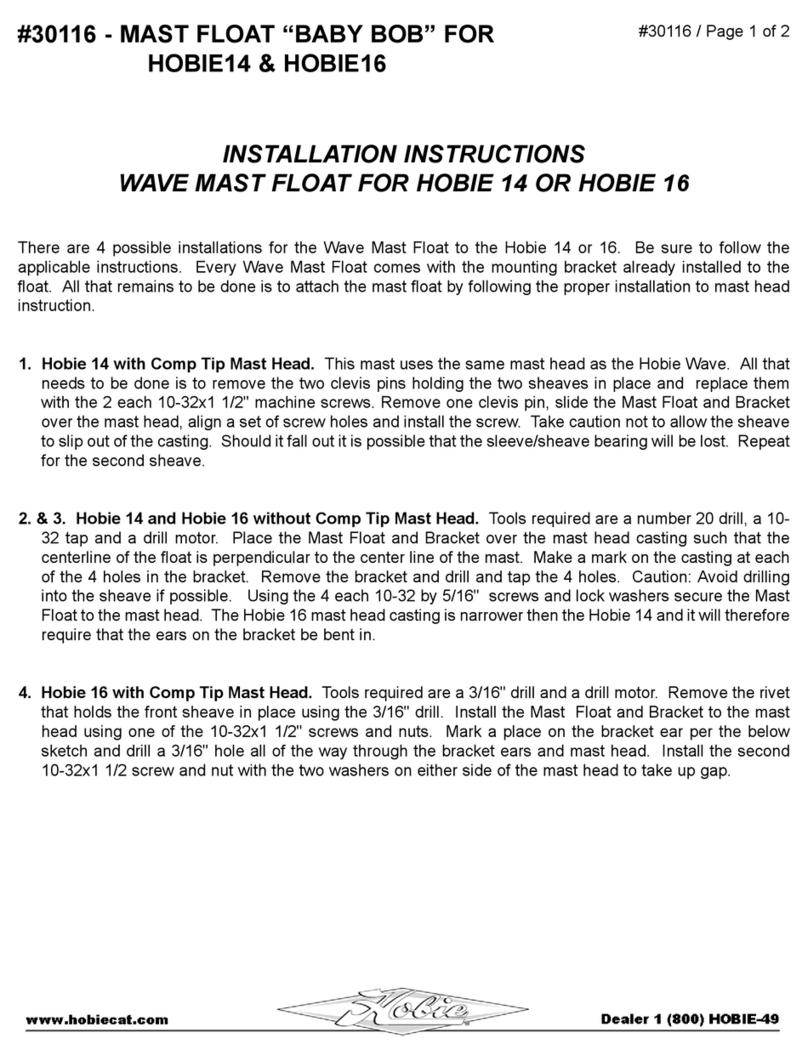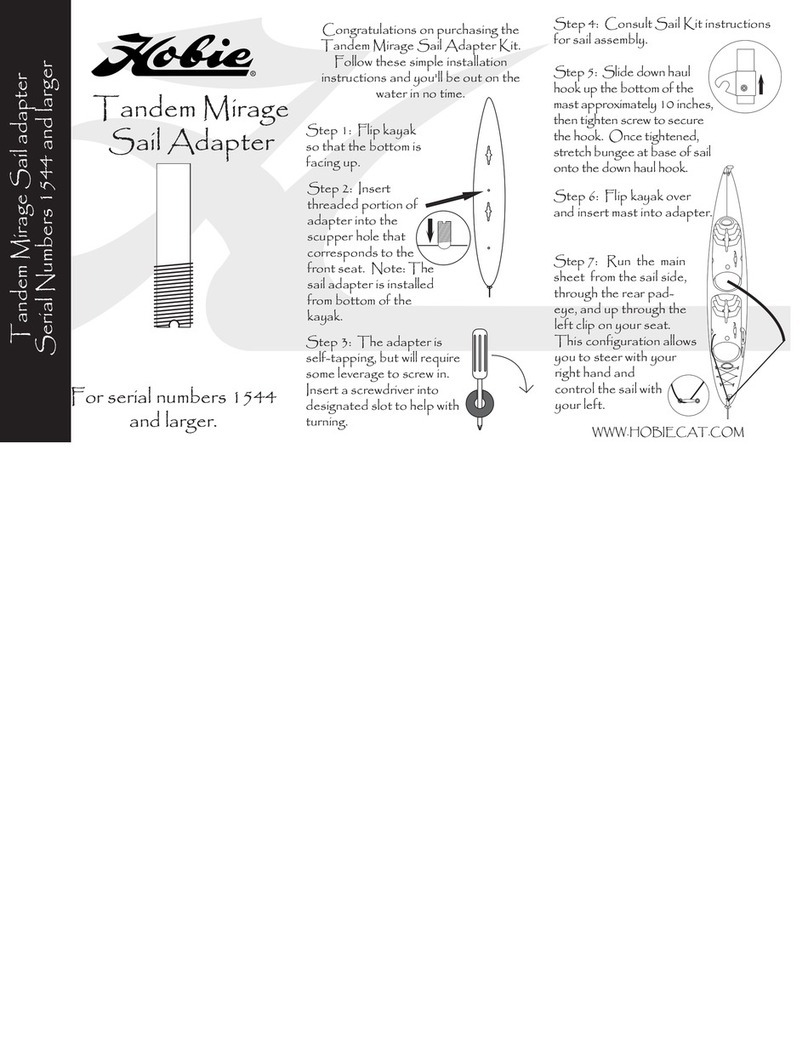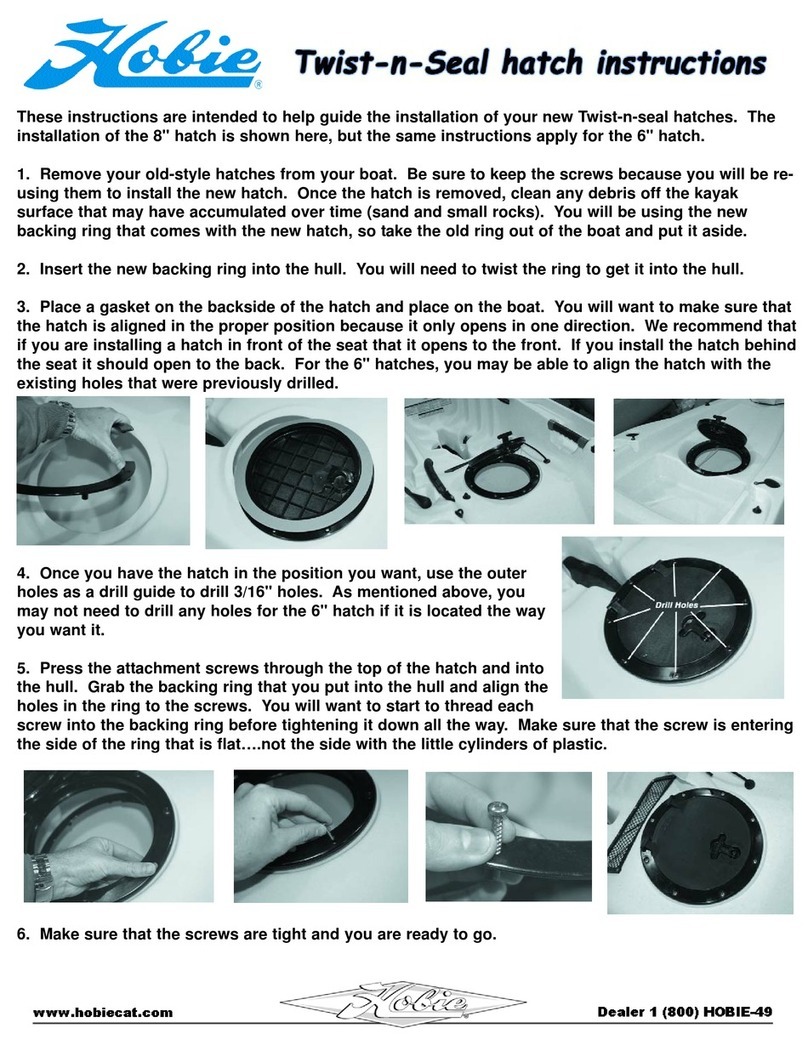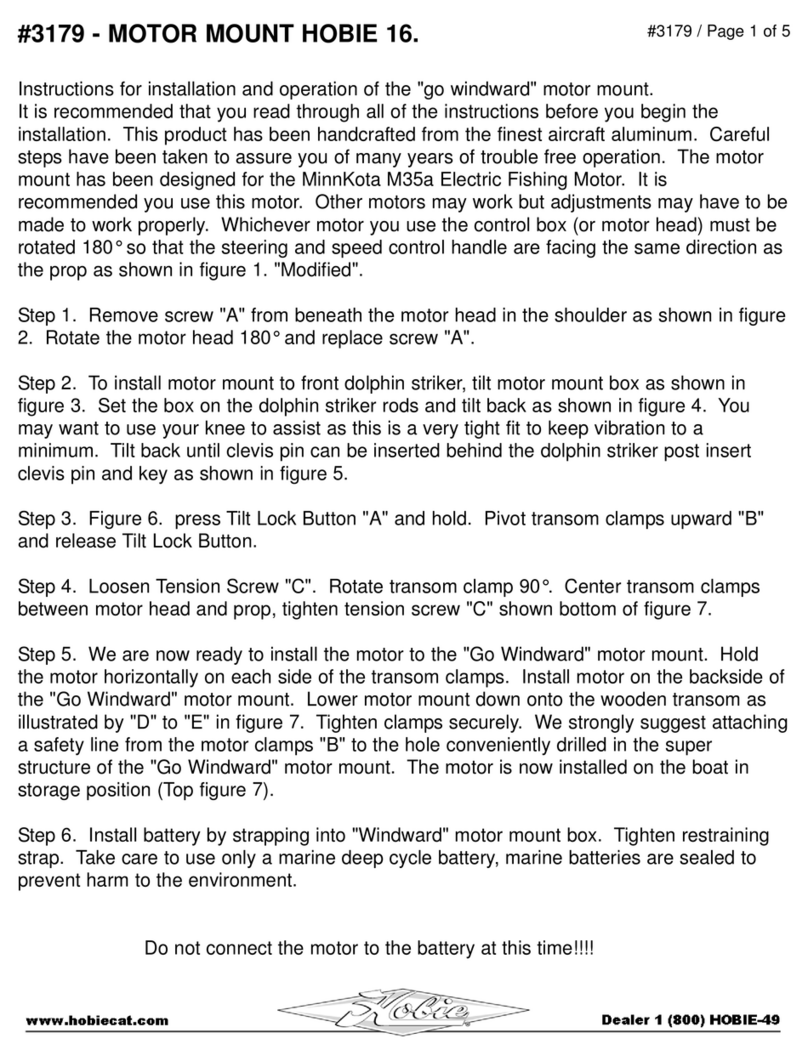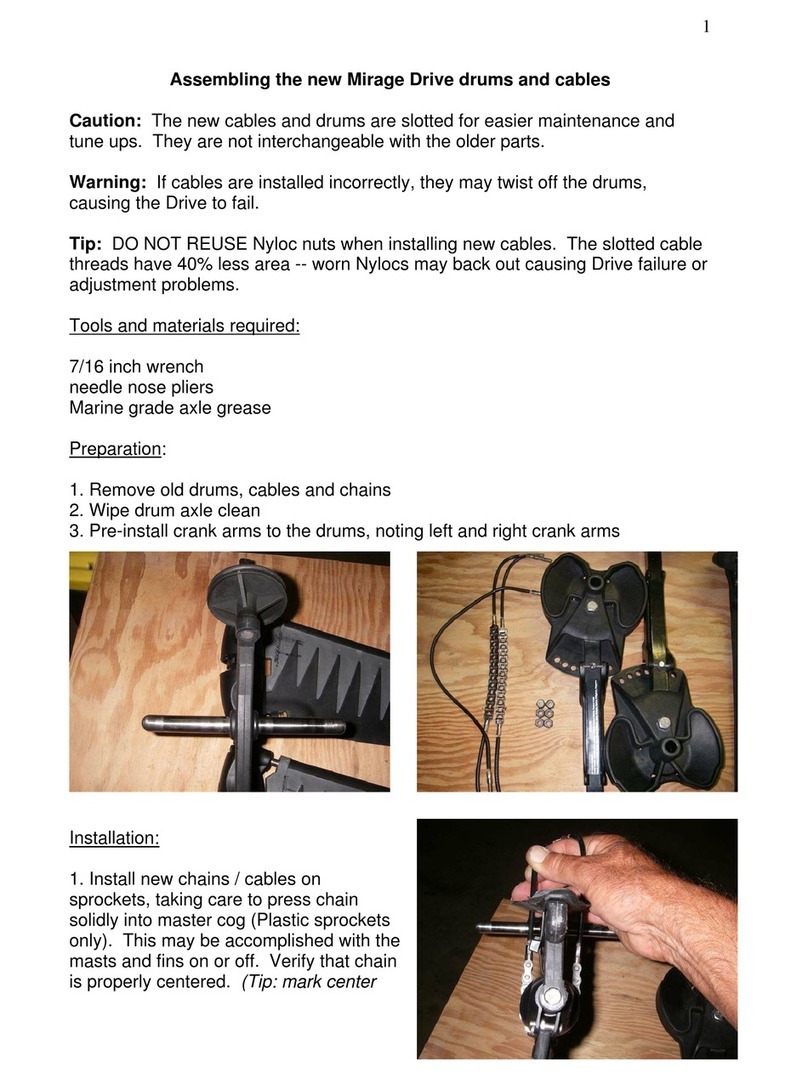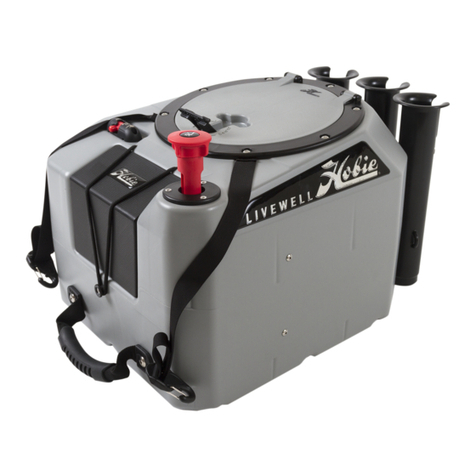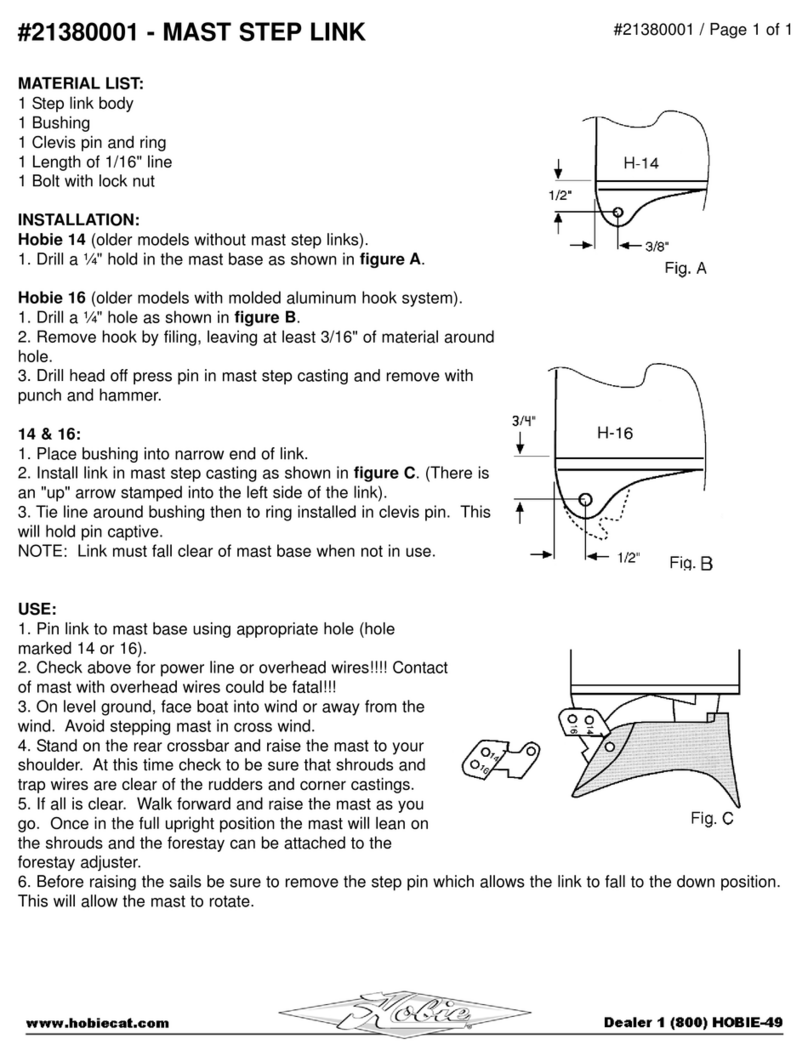Sailing with Hobie's patented
MirageDrive Mechanism adds a
whole new dimension to sailing.
For the best performance, continue
pedaling while sailing. You will
notice that with very little effort
pedaling, the kayak will respond with
a surprising amount of performance.
If you sail without pedaling, the
pedals should be together. This will
align the fins in the straight down
position so they will act as a
daggerboard to reduce side slip.
The sail will work even in very light wind
because of the benefit of pedaling to
create apparent wind. Optimum wind
strength is between 4 to 10 MPH. As the
wind speeds exceed optimal range, the
kayak will become more difficult to
control. When there is too much wind,
take the sail down, roll it up, and stow it
on the right side of the cockpit. The
bungee hook in the cockpit can be
stretched over the rolled up sail and
hooked to the paddle retainer bungee
on the side of the kayak.
Pull in the "mainsheet" until the sail stops
"luffing" (the sail will fill with wind and the
wrinkles will disappear). This ammount of
trim will work, but for optimum performance
you should try to get the "telltales" (the black
ribbons attached to the sail) flowing back on
both sides of the sail.
Sailing your kayak will open up new
experiences and broaden your
opportunities to go further and
faster with less physical effort. Be
sure to learn the right-of-way rules
and when in doubt, give way to
others. Have fun and stay safe.
Sailing Tips
"Reaching":
This is the
fastest point
of sail.
Points of Sail
Trim the Sail
Sheet out (let the
sail out) or head
up (turn into the
wind or turn right).
Sheet in (pull the
sail in) or head
down (turn away
from the wind or
turn left).
Sail is trimmed
with both telltales
flying straight
back.
"Close hauled": The kayak will heel or lean most when
sailing close hauled. Shift your weight to the side of
your seat to counter the lean of the kayak. Be ready to
let the sail out to reduce the amount of heel in stronger
wind.
Optimum Wind
Tacking
Enjoy
www.hobiecat.com
WIND
Tacking a sailboat is the act
of changing the direction of
the boat from sailing close
hauled with the wind on one side,
coasting through the eye of the wind,
and then sailing with the wind coming
from the other side. This maneuver can
be difficult for beginning sailors but with
the Hobie MirageDrive you simply pedal
through the tack and resume sailing
on the new heading. Since you
can not sail directly into the
wind, you must sail in a
zig zag course to make
it directly upwind. Of
course, with the
Hobie MirageD rive,
you can cheat and
just point the kayak
where you want and
pedal!
WIND
Over trimmed Under trimmed CorrectTrim
WIND
Running
Close Hauled
Reach
Close Hauled
Reach
Can't Sail
In This
Area
"Running":
Sailing
downwind does
not take
advantage of the
aerodynamic
shape of the sail.
Starboard
Tack Port
Tack
Dancing

